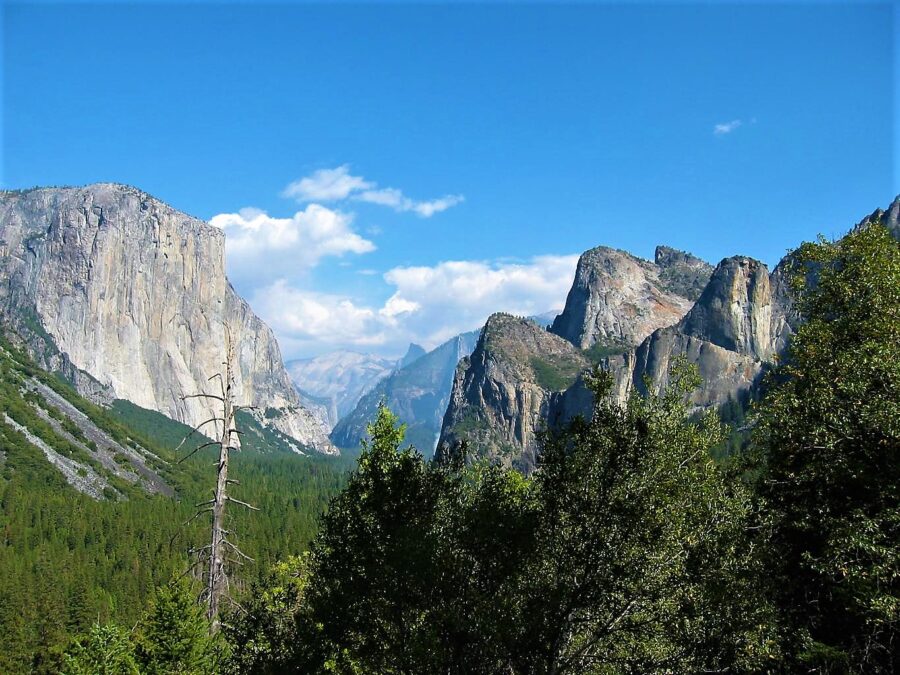
THE HIGH GROUND Larry W Peebles 08/21/20 20.31
My wife and I had been married a few years when we bought our first home. I spoke with her Dad about the house, and his first piece of advice was “buy something up high so it won’t flood”. I checked, and the front porch was over three feet above the street. There was plenty of high ground between the street and the foundation of the home, even if the storm drains in the street became plugged. To buy the high ground was good advice I have never forgotten.
One of the fundamental military strategies is to take the high ground. The high ground is harder to attack, easier to defend, and gives a better view of the enemies’ movement. Rounds of ammunition fired from high ground travel further. In all my travels and study of history, I don’t think I can recall one fort being built on low ground with poor visibility. The high ground is simply more desirable. Building defenses or a fort on the high ground may require more time and work, but in the long run the effort will pay huge rewards.
In the American Civil War, the battle that was the turning point in the outcome of the war was the Battle of Gettysburg. That battle was fought over a period of several days, but in reality the battle was decided on the first day. The Northern Army held the high ground, but with minimal troops and no lines of defense. It was late in the day when the Southern Army realized they had the clear advantage in numbers of troops. However, they did not attack the high ground, choosing instead to wait until morning. During the night, more Northern troops arrived, and they worked all night felling trees to build defense lines. Every attack by Southern troops on the second day was repelled at great cost, and the North prevailed in the battle. The Southern army retreated, and never again found themselves with such an opportunity to win a major battle on Northern lands.
Moses’ efforts to free and lead the children of Israel (Jacob) out of Egypt were in many respects a military campaign. He would have to convince Pharaoh to release the Israelites, the manpower source for construction of the great Egyptian cities and monuments. Then he would have to exit without encountering the Egyptian army, the most formidable in the world at that time. He would have to lead the Israelites on foot toward the land God had promised them without engaging other opposing armies. Finally, he would have to drive out the armies occupying the land God had promised. All the time, he would have to feed and supply several million people on the journey.
With high ground being so strategic, we will look for this in Moses’ story.
- Mt. Horeb– This may be an alternative name for Mt. Sinai, or it may be another significant mountain in the same region of the Sinai Peninsula. [The location of Mt. Sinai is unknown. Paul wrote in the book of Galatians of “Sinai in Arabia”, but biblical Arabia included present-day Saudi Arabia, the Sinai Peninsula, and more.] This is the mountain where God called Moses to the role of delivering His people from 400 years of Egyptian slavery. In Exodus Chapters 3-4, God called Moses to the mountain, revealed Himself in the burning bush, declared His name (I AM), and commissioned Moses to speak to Pharaoh. He told Moses the children of Israel would come out with the plunder (silver and gold) of Egypt, and would “worship God on this mountain.”
- The campaign began to free the people. Following all the plagues, the Passover, and the annihilation of the Egyptian army at the Red Sea (Exodus Chapters 5-14), we find the Israelites free, but in need of water. At the “rock near [Mt.] Horeb”, Moses was instructed by the Lord to strike the rock so that water would come out supernaturally for the people to drink. (Exodus Chapter 17). This would have taken a tremendous flow of water to satisfy the thirst of several million people plus livestock.
- Also in Exodus Chapter 17, Moses stood “on top of the hill” where Aaron and Hur held up his arms so the Israelites would supernaturally prevail in the battle against the Amalekites.
- Three months after leaving Egypt, they camped in front of Mt Sinai. Moses was called up to the top of the mountain three times. The first time he was called up, God spoke audibly so the people could hear. They were instructed to wash their clothes and come to the base of the mountain. The Lord demonstrated Himself to the people with smoke, fire, and the sound of a trumpet. The whole mountain shook. Then Moses went up. He was given the Ten Commandments, and the law for the people to follow (Exodus Chapters 19-23). God promised that if the people would worship Him, He would bless their food and water, take away sickness, give them a full life span, and cause them to succeed in taking and possessing the land He had promised them. He warned that the worship of false idols would “be a snare” to them.
- Moses’ second trip to the top of Mt. Sinai begins in Exodus Chapter 24 through 31. Moses and his aide Joshua were instructed to come to the base of the mountain along with Aaron, two of his sons, and seventy elders. The Lord again showed Himself. The group that approached saw that under His feet was “pavement made of sapphire.” The cloud of His glory covered the mountain for six days. On the seventh day, Moses and Joshua started up the mountain. Joshua went part of the way; only Moses went to the top, where he stayed forty days. The Israelites below saw a consuming fire on top of the mountain. God told Moses He wanted him to take an offering for the Tabernacle, and gave detailed instructions for the building of the Tabernacle, the Ark, the furnishings, and the clothing for the priests who would minister in the Tabernacle. He told Moses to take a census of the people, which was recorded in the Book of Numbers. The Lord appointed two chief helpers gifted with the wisdom of the Holy Spirit and skills to craft the Tabernacle. He gave instructions on the Sabbath, and finally gave Moses two tablets of stone, with the law written by God’s own hand. Moses was sent back down when the Lord informed him the people back in camp had “become corrupt”. (Exodus Chapter 32).
- In Moses’ absence, the people had crafted a golden calf and begun to worship it. Moses chose men who were still loyal and sent them through the camp. They killed 3000 of the transgressors with their swords. He pleaded with the Lord to spare the remainder. God sent a plague. He told Moses to go on to the land He had promised, but He would not go with them. Moses pleaded again, and again the Lord relented. Then Moses asked to see His glory. The Lord told him to stand on a rock, where He hid him in the cleft of the rock as His glory passed by.
- In Exodus Chapter 34, God told Moses to prepare two stone tablets like the ones Moses broke when he saw the golden calf, and come back up on Mt. Sinai for the third time. God revealed Himself again, as a cloud. He said He would drive out the occupants of the land He had promised to the Israelites, but the people were to make no treaty or inter-marry with them or worship their gods. He instructed Moses as to the feasts they were to celebrate which were holy to the Lord, and commanded they bring the “first fruits of the land to the house of the Lord”. He wrote on the tablets the Ten Commandments. Moses was with the Lord another forty days, then was sent down. As proof that he had been with the Lord, God caused Moses face to shine radiant so that all the people saw it.
- Numbers 27:12-14- “Then the Lord said to Moses, ‘Go up this mountain in the Abarim range, and see the land I have given the Israelites. After you have seen it, you too will be gathered to your people, as your brother Aaron was, for when the people rebelled at the waters in the Desert of Zin, both of you disobeyed my command to honor me as holy before their eyes.”
- Deuteronomy 34:1- “Then Moses climbed Mt. Nebo from the plains of Moab to the top of Pisgah, across from Jericho. There the Lord showed him the whole land.” Moses died there in Moab, as the Lord had said. God buried him. His final tribute is recorded in Deuteronomy 34:10-12- “Since then, no prophet has risen in Israel like Moses, whom the Lord knew face to face, who did all those miraculous signs and wonders the Lord sent him to do in Egypt- to Pharaoh and to all his officials, and to his whole land. For no one has ever shown the mighty power or performed the awesome deeds that Moses did in the sight of all Israel.”
Moses was a mighty prophet with a legacy that was unmatched. He was the first savior of Israel, a type of Jesus– the final Savior of the world. On the mountains and high ground he met the Lord, and was changed in His presence. He spoke face to face with Him, and became His friend. When not on the mountains, he had a special place called the Tent of Meeting where God would come and visit with him. (Exodus 33)
The devil and the forces of darkness that oppose God and hate His children also know the value of the high ground. When the Israelites came into the land the Lord had promised, they found the inhabitants had erected “altars, sacred pillars and wooden images” on the high places. Unfortunately, this was a practice they never entirely eliminated. Later in their history, some of the kings of Israel and Judah fell away from God and promoted worship of false idols on the high places.
Climbing some of these mountains may not have been easy, but Moses’ special relationship with God was initiated and cultivated on the mountain top. He did not simply go and meet the Lord. He often stayed a while. When we review his whole life, we can see the benefit of these high ground or mountain top experiences with God. We may not be able to stay on the mountain top, but of necessity, we must climb the mountain and seek and value the high ground times with God. We must look up to the mountains, where our help comes from. (Psalm 121:1-2) We must aim high if we want to go far with the Lord. The high ground is indeed the most desirable.


